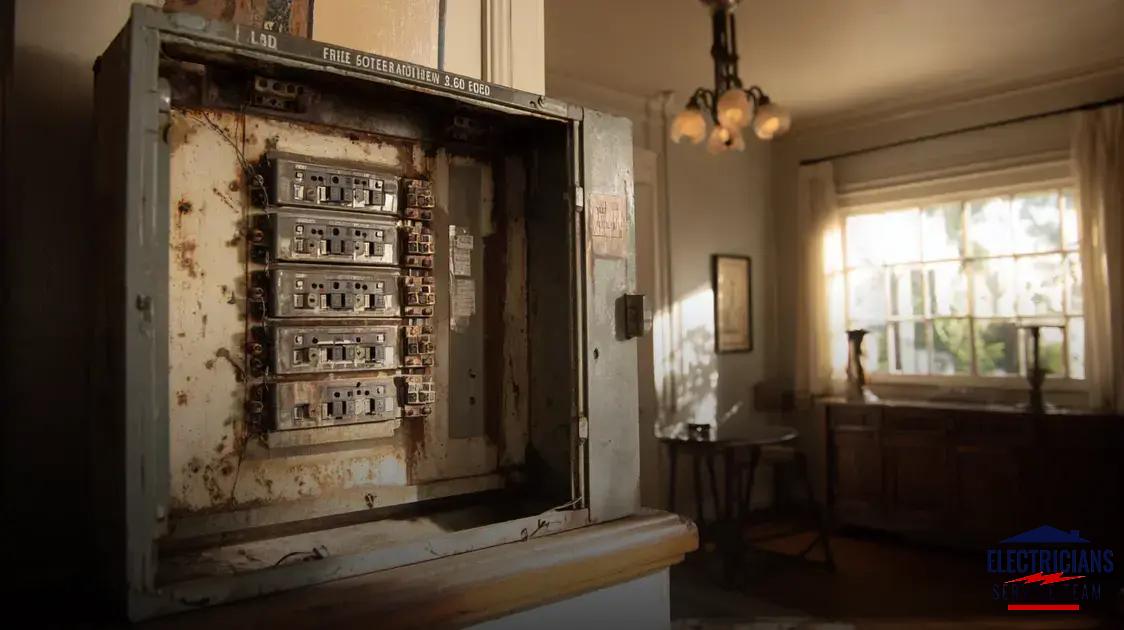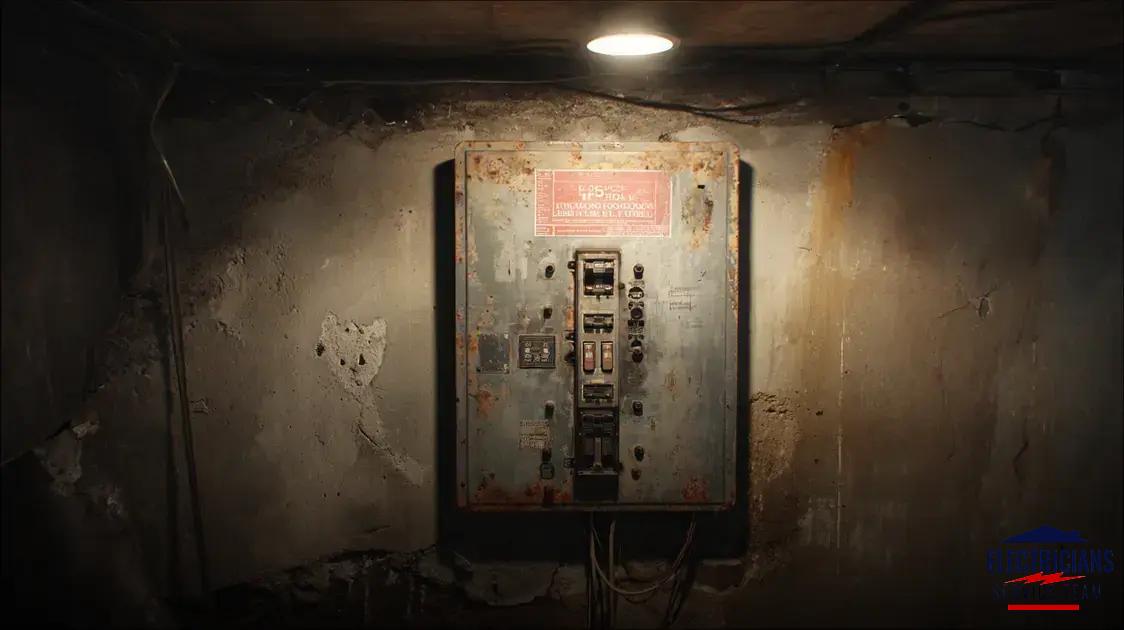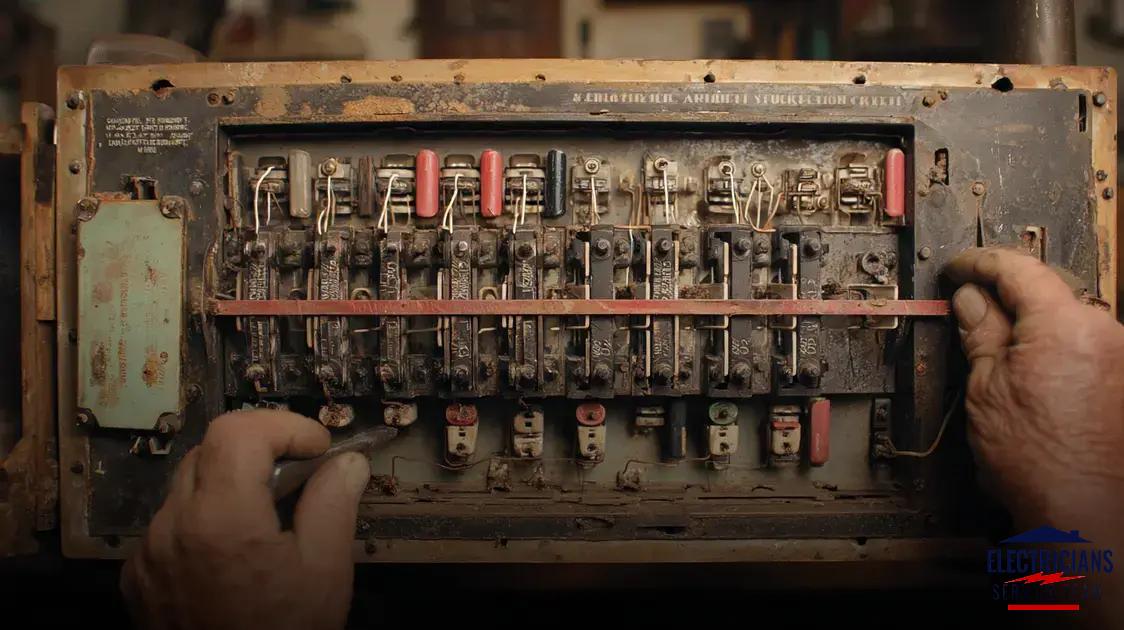The Dangers of Having an Older 100-Amp Pacific Electric Panel
Estimated reading time: 5 minutes
- Outdated Safety: Older 100-amp FPE panels can pose significant fire and electrocution hazards.
- High Failure Rates: Breakers often fail to trip, leading to overheating and potential fires.
- Inspection Challenges: Faulty breakers aren’t easily identifiable without comprehensive testing.
- Insurance Implications: Homeowners may face surcharges or non-coverage due to outdated panels.
- Urgent Action Needed: Replacement of older FPE panels is strongly recommended by experts.
Table of Contents
- Understanding the Risks of Older FPE Panels
- Age and Design Issues: What Makes 100-Amp FPE Panels Dangerous?
- Recommendations from Experts and Authorities
- Insurance Implications for Homeowners
- Taking Action: What Homeowners Should Do
- Conclusion
- FAQ Section

Understanding the Risks of Older FPE Panels
Older 100-amp FPE panels have been widely documented as presenting elevated fire and shock hazards. Research indicates that breakers within these panels often fail to trip during overcurrent or short-circuit conditions, which can allow for dangerous heat to build up, leading to wire damage and possibly resulting in a fire. The Columbus, Indiana Fire Department reports that approximately 2,800 fires, 13 deaths, and an estimated $40 million in property damage have been directly attributed to Federal Pacific panels.
High Breaker Failure Rates
Independent testing led by engineer Jesse Aronstein has shown alarming statistics regarding Stab‑Lok breakers. Failure rates during load testing can exceed 25% to 50%, meaning that these breakers often do not perform their essential safety function. When a breaker fails to trip, circuits and the breaker can overheat, heightening the risk of fire and electrocution.
Latent Failure Modes
The issue with older FPE panels is compounded by their latent failure modes. Many times, these panels may appear to function correctly until a fault occurs, at which point the critical failure of the breakers becomes evident. This often happens at the most dangerous times, when protection is desperately needed.
Inspection Limitations and System-Level Risks
The Consumer Product Safety Commission (CPSC) recommends that homeowners have their FPE panels inspected by a qualified electrician for signs of overheating. However, expert testing suggests that faulty Stab‑Lok breakers cannot reliably be identified during an inspection without removing and bench-testing them. Thus, replacing the panel entirely often proves to be more practical than attempting selective testing.
Moreover, in homes with a 100-amp FPE main feeding a subpanel, the risk escalates. If multiple branch circuits are loaded simultaneously, the capacity can surpass the maximum rating. Should the 100-amp main fail to trip—a known issue with Stab‑Lok breakers—there is a risk of overloading the feeder conductors, significantly elevating the likelihood of a fire. Source.
Age and Design Issues: What Makes 100-Amp FPE Panels Dangerous?
The danger associated with 100-amp FPE panels increases with their age. Over time, degradation occurs, leading to issues such as heat-damaged bus bars, loosened terminations, corrosion, and weakening breaker mechanisms. These problems elevate the chances of failed tripping and arcing during fault conditions. Furthermore, as homes become increasingly dependent on electricity for HVAC systems, electric vehicle charging, and modern appliances, the capacity margins at 100 amps become exceedingly tight. If the main panel fails during an overload or a short circuit, the risks increase considerably. Source.
Potential Grounding and Bonding Deficiencies
Many older installations utilizing FPE equipment may not adhere to modern grounding and bonding practices. This deficiency significantly reduces the effectiveness of fault-clearing mechanisms and further raises the risks of shock and fire hazards.
Recommendations from Experts and Authorities
Given the documented dangers associated with older 100-amp FPE panels, electrical safety experts strongly recommend complete panel replacements rather than merely swapping out defective breakers. This approach is advised due to the high defect rates and limitations of testing methods.
Local fire departments have issued warnings that emphasize the elevated fire risk posed by FPE panels. These public safety advisories reinforce the urgent need for homeowners to take proactive steps towards remediation. Source.
Insurance Implications for Homeowners
Having an older 100-amp FPE panel can complicate things further when it comes to home insurance. Many insurance companies may surcharge, exclude, or require homeowners to replace FPE equipment due to the elevated loss history and safety concerns associated with these panels. This emphasizes the importance of addressing the issue not only for safety but also for maintaining affordable insurance coverage.
Taking Action: What Homeowners Should Do
If you are a homeowner with an older 100-amp FPE panel, here are actionable steps you can take:
- Prioritize Replacement: Seek a licensed electrician to replace the FPE main panel with a modern, listed panelboard and breakers. This should include upgrading service conductors and ensuring that grounding and bonding meet current codes.
- If Immediate Replacement Isn’t Possible: Have an electrician perform a comprehensive thermal and visual inspection of your panel. Look for signs of overheating, discoloration, or loose lugs—issues that can signal a potential danger. While these inspections can be helpful, they cannot guarantee that the Stab‑Lok breakers will trip when needed, so be aware that this is a temporary risk-reduction measure only.
- Minimize Heavy Loads: Reduce the risk by minimizing simultaneous heavy electrical loads on your older system. This includes staggering use of major appliances to avoid overloading your panel.
- Upgrade Service If Necessary: If your load calculations indicate the need, consider increasing your service size from 100 amps to 150 or even 200 amps. This upgrade not only enhances safety margins but can also satisfy insurer concerns.
- Consider Additional Protections: Installing appropriate arc-fault and ground-fault circuit interrupters (AFCI and GFCI) downstream where feasible can provide an additional layer of protection, especially if immediate replacement is not an option.
Conclusion
In conclusion, if you have an older 100-amp Pacific Electric panel, the time to act is now. With the potential for significant safety hazards—including the risk of fire and electrocution—it’s a situation you can’t afford to ignore. By prioritizing the replacement of your electrical panel and following the outlined steps, you not only protect your home and family but also ensure compliance with insurance requirements.
If you have questions or require assistance with your electrical panel, don’t hesitate to reach out to our expert team at Electricians Service Team. We specialize in providing safe, reliable electrical solutions for your home. Contact us today to explore our services or to schedule a consultation to discuss your electrical needs. Protect your home and your loved ones—act now to address the dangers of outdated electrical panels.

FAQ Section
Q: Why are older 100-amp Pacific Electric panels considered dangerous?
A: They have been documented to have high failure rates which can lead to fire hazards and electrocution risks.
Q: What should I do if I have one of these panels?
A: It is recommended to replace the panel with a modern alternative and reduce heavy loads on the system if immediate replacement is not feasible.
Q: How can I ensure my home’s electrical system is safe?
A: Regular inspections by a licensed electrician and upgrading outdated equipment can significantly enhance safety.





